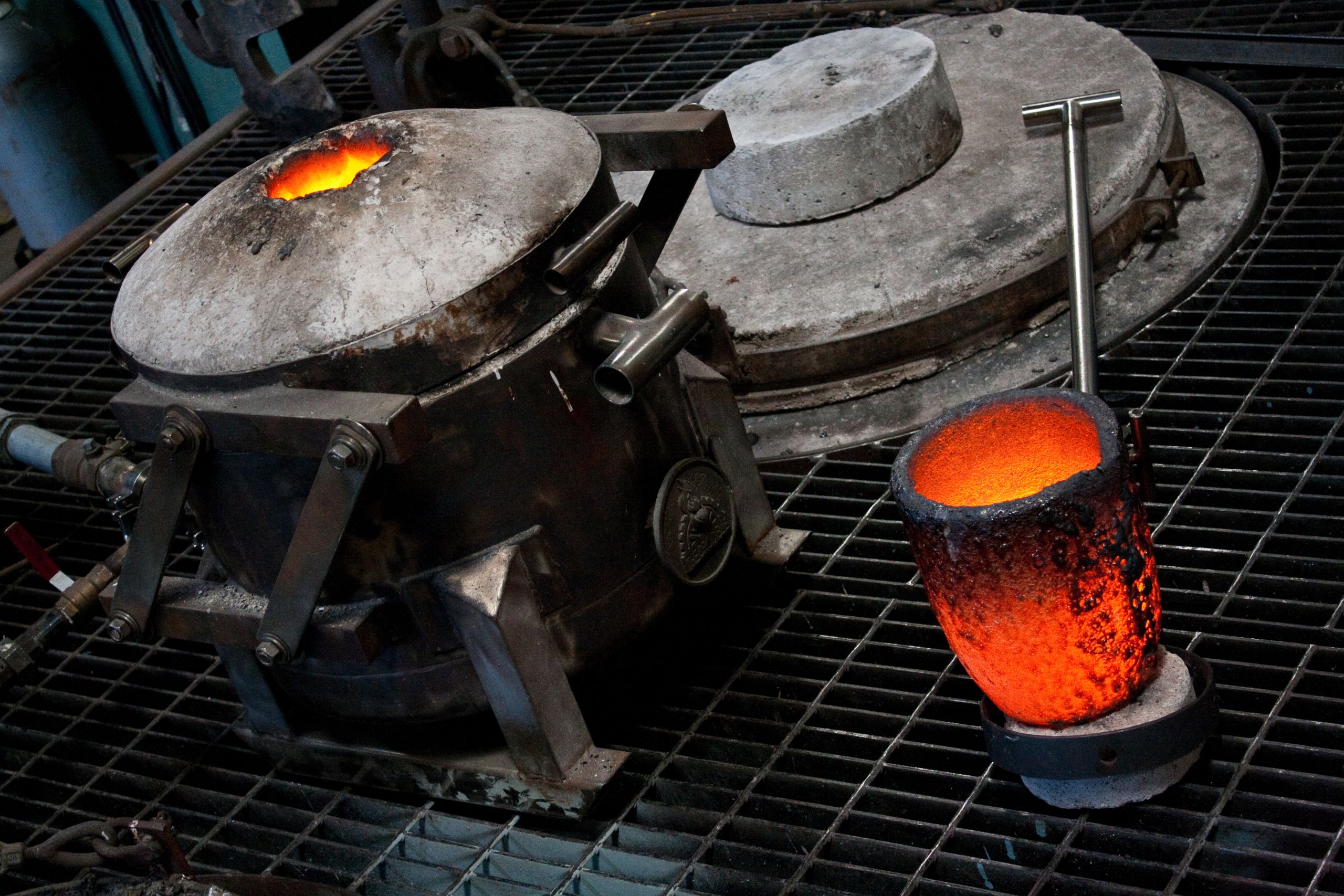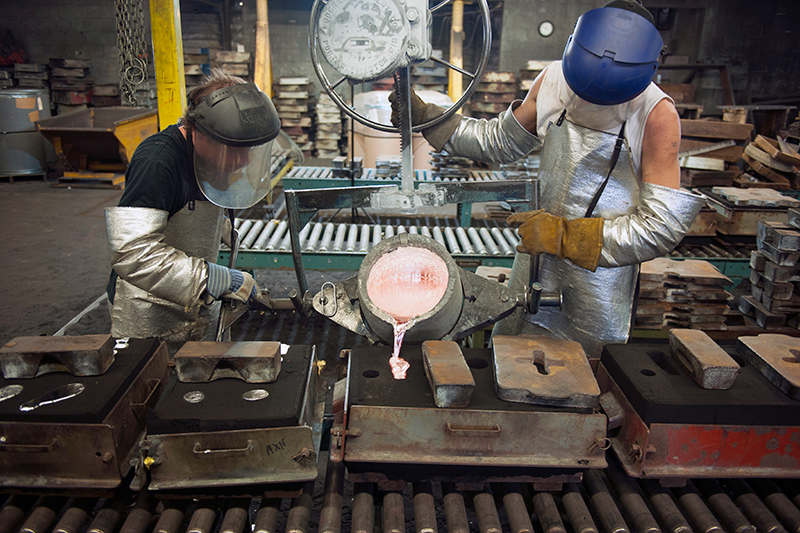Why the Aerospace and Automotive Industries Rely on Casting Foundry Capabilities
Wiki Article
The Effect of Technology on Effectiveness in the Casting Foundry Industry
The Casting Foundry sector has actually experienced notable improvements because of technical innovations. Automation and robotics have streamlined operations, enhancing manufacturing rates while lessening mistakes. Furthermore, real-time tracking and data analytics are reshaping decision-making procedures, bring about much more efficient resource management. As these technologies remain to evolve, they present both chances and obstacles. Recognizing the full impact of these changes is necessary for market stakeholders to grow and adapt in a competitive landscape.The Duty of Automation in Modern Foundries

These systems help with tasks such as mold development, putting, and air conditioning, enabling real-time monitoring and adjustments to optimize performance. Additionally, automation allows foundries to run constantly, raising output and minimizing preparations.
The combination of automated solutions additionally sustains far better resource monitoring, as equipments can be set to use products better, decreasing waste. By implementing automation, modern-day factories can adapt to varying demand, making sure that they remain competitive in a swiftly progressing industry. Inevitably, automation stands for a transformative force, redefining typical Foundry practices and leading the way for future innovations.
Enhancing Quality Assurance With Technology
Innovation revolutionizes quality control in factories, ensuring that items meet stringent market standards. Advanced examination systems, such as laser scanning and 3D imaging, allow specific measurement of cast elements, determining defects at the earliest phases. These devices promote real-time tracking of producing procedures, permitting prompt adjustments and reducing inconsistencies from top quality benchmarks.Additionally, data analytics plays an essential role in high quality control by analyzing patterns and forecasting possible failures, which boosts the reliability of the production line. Casting Foundry. Implementing artificial intelligence formulas allows factories to constantly enhance their high quality guarantee procedures by learning from historic data
In addition, the assimilation of electronic doubles allows digital simulations of production procedures, enabling extensive screening and validation before physical Casting takes place. Collectively, these technological developments not only boost the top quality of cast items but additionally reinforce consumer fulfillment and count on the foundry's output.
Decreasing Waste and Power Consumption

In addition, the introduction of 3D printing modern technology in mold and mildew production significantly decreases material waste by enabling the production of complex layouts without the demand for too much machining. Additionally, energy-efficient devices and renewable resource resources are increasingly being taken on, adding to reduced functional prices and a smaller sized carbon footprint.
These technologies not only boost functional performance but also advertise lasting practices within the Casting Foundry industry, aligning with global efforts to enhance and minimize ecological impacts resource monitoring.
The Impact of Information Analytics on Decision Making
Information analytics has emerged as a necessary tool for enhancing decision-making processes in casting shops. By leveraging information collected from different stages of manufacturing, foundries can determine inefficiencies and areas for renovation. For example, real-time monitoring of tools performance allows managers to make enlightened choices pertaining to maintenance routines, minimizing downtime and optimizing outcome.Moreover, predictive analytics helps projection need fads, making it possible for foundries to readjust production degrees as necessary and reduce excess supply. This ability not just simplifies procedures yet likewise aids in resource appropriation, making certain that products are used efficiently.
Data-driven understandings empower management to evaluate the performance of different alloys and materials, leading to boosted product high quality. As factories progressively embrace data analytics, the combination of these understandings right into strategic decision-making procedures leads the way for improved functional efficiency and affordable benefit in the market.
Incorporating Robotics Into the Molding Refine
The combination of robotics into the molding process offers considerable benefits for casting factories. By automating jobs, these systems can minimize human mistake and enhance production speed, resulting in a lot more effective procedures. As modern technology breakthroughs, the potential for robotics to change conventional molding techniques ends up being significantly noticeable.Benefits of Robot Automation
Robotic automation supplies significant benefits in the molding process of casting foundries, enhancing both performance and precision. By making use of robotic systems, factories can achieve greater production prices as a result of the constant rate and integrity of machines. These robotics can perform recurring jobs with minimal downtime, which enhances operations and optimizes outcome. Furthermore, the assimilation of robotics permits greater versatility in production, enabling shops to promptly adapt to differing demands and complex styles. Robotic automation adds to enhanced work environment safety by reducing the requirement for human treatment in dangerous settings. Ultimately, the consolidation of robotics in the molding procedure leads to enhanced operations, reduced operational costs, and enhanced item high quality in the Casting Foundry industry.Decreasing Human Mistake
Although human skill and instinct have traditionally played necessary roles in the molding procedure, incorporating robotics substantially minimizes the risk of human error. Robotics offers accuracy and uniformity, making sure that each mold and mildew is created with precise specs, decreasing irregularity created by exhaustion or interruption among human drivers. With advanced sensors and software program, robot systems can discover anomalies and make real-time changes, further lessening the possibility of defects. The automation of recurring tasks allows human workers to concentrate on even more complex duties, boosting total top quality control. In addition, the implementation of robotics facilitates a much more organized technique, resulting in standardization throughout manufacturing processes, which is vital for preserving top quality outcomes in the Casting Foundry industry.Enhancing Production Rate
Integrating robotics right into the molding procedure not just reduces human error however likewise substantially boosts manufacturing speed within casting foundries. By automating repetitive tasks, robotics can operate continuously, allowing for higher outcome rates compared to conventional techniques. Their accuracy guarantees that molds are constantly loaded, reducing downtime created by changes or flaws. In addition, robotics enable quick modifications in assembly line, accommodating numerous styles without considerable hold-ups. As a result, shops can react extra swiftly to market demands, raising their one-upmanship. The combination of advanced robotics technologies improves the workflow, enhancing resource allowance and lowering labor expenses. Overall, the adoption of robotics in molding processes considerably moves efficiency and performance in the Casting Foundry industry.Getting Rid Of Obstacles in Technology Adoption

Future Patterns in Casting Foundry Modern Technology
What developments lie in internet advance for the Casting Foundry sector? The future of casting Foundry modern technology is poised for considerable improvement with innovations such as 3D printing, automation, and expert system. These developments assure to enhance accuracy and lower waste in the Casting procedure. 3D printing enables the manufacturing of complicated geometries that standard techniques can not achieve, while automation simplifies procedures, raising general performance. Furthermore, the assimilation of AI and equipment understanding will certainly help with predictive maintenance, enhancing equipment efficiency and lessening downtime.Furthermore, the fad in the direction of sustainable methods is expected to shape the market, with an emphasis on environmentally friendly materials and procedures. Digital doubles, which simulate real-world procedures, might likewise become commonplace, permitting shops to evaluate scenarios and make data-driven decisions. Collectively, these developments are established to redefine the Casting Foundry landscape, driving efficiency and sustainability while satisfying the advancing needs of various industries.
Frequently Asked Inquiries
Just How Does Innovation Impact Employee Duty in Foundries?
Innovation substantially reshapes worker duties in foundries by automating repeated tasks, improving accuracy, and demanding brand-new capability. Workers significantly focus on supervising advanced machinery and information evaluation, resulting in a shift in task obligations and called for competencies.What Are the Expenses Connected With Carrying Out New Technologies?
The expenses of implementing new modern technologies incorporate initial financial investments, training expenses, continuous upkeep, and possible disruptions throughout transition. Organizations should carefully assess these economic aspects to guarantee successful combination and lasting long-term advantages.Just How Can Little Shops Adopt Modern Technology Affordably?
To embrace innovation cost effectively, tiny factories can check out gives, collaborations, and low-priced solutions. Step-by-step upgrades, staff member training, and leveraging existing resources additionally improve effectiveness without significant economic stress, fostering progressive technological combination into procedures.What Abilities Are Needed for Workers in Tech-Driven Foundries?
Workers in tech-driven shops need skills in information evaluation, maker procedure, and software program proficiency. Additionally, flexibility to brand-new devices and technologies, analytic capacities, and collaboration with design groups are necessary for success in this advancing atmosphere.Just How Does Modern Technology Effect Safety And Security in Foundries?
Technology considerably enhances safety and security in foundries by automating hazardous tasks, employing advanced monitoring systems, and promoting real-time communication. These innovations decrease work environment crashes and boost emergency situation feedback, ultimately cultivating a more secure setting for all workers.Technology changes quality control in factories, making certain that products meet strict sector requirements. Technologies such as automated molding systems and advanced melting technologies make it possible for factories to optimize material usage and reduce power demands. As the helpful hints Foundry industry increasingly recognizes the advantages of emerging technologies, overcoming obstacles in modern technology adoption becomes vital for enhancing functional effectiveness. Technology substantially reshapes employee functions in foundries by automating repetitive jobs, improving accuracy, and requiring new ability collections. Innovation considerably improves safety in shops by automating dangerous jobs, utilizing innovative monitoring systems, and promoting real-time communication.
Report this wiki page